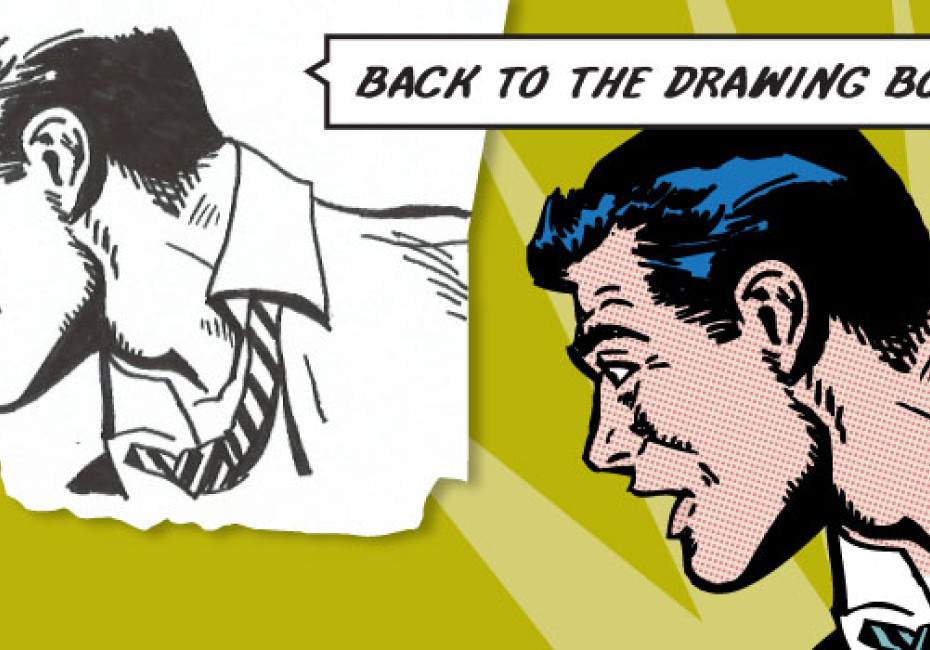Related services
What do you think of when you picture a ‘Graphic Designer’? If you’re thoughts turn immediately to a caffeine-high, twenty-something, Apple addict wearing a t-shirt, blazer and skinny jeans then give yourself 10 points – I’ve pretty much just described myself! But when you think of how a graphic designer operates these days it’s all about the computer. For most – gone are the days of pen and paper! In fact the image of ‘pen and paper’ is something a lot of designers would prefer not to be associated with at all. All too often in the past when you described yourself as a ‘graphic designer’ people would assume that you sit doodling all day – not really considered the most business-like of activities! In our studio though, we’re not embarrassed of our pencil-wielding roots.
The majority of our projects start their journey in the sketchbook. This allows us to exhaust any avenue for design that we think would be suitable for the job before we run off in any particular direction on the mac. These rough sketches are a quick way to visualise basic composition, produce a range of quick logo ideas, develop a character illustration or to quickly visualise how a website might look on a mobile device.
We’ve also blurred the lines between print designer, web designer and illustrator and each of us manage projects from start to finish – from taking a brief, to concept, to presentation and ultimately to production. This way we feel we’re giving our clients a much easier life by only having to deal with one or two people in the studio and it also allows us to work seamlessly from design for print to interactive design for web. We also champion the use of bespoke illustrations and often create unique graphics for our clients by hand – this allows us to inject a project with a fresh, vibrant look that can be tailored to suit any brand.
We believe that our designers should have a combination of artistic, technical and verbal skills to best suit the needs of our clients. Though any concept we present to a client should be self-explanatory, there is always a rationale behind the decisions that have been made and we understand that our clients want and deserve an explanation for what they’ve commissioned. This is a good example of why we feel it’s better for our designers to work on a project from start to finish – if our clients can talk directly with the designer involved then they’re more likely to get exactly what they want and also maintain a level of control over the final product.
Don’t get me wrong we still look and act like your typical designer! We’ll spend a bit longer looking at a menu in a restaurant than most (criticising the fonts and layout) and we’ll buy things from the supermarket simply because we love the packaging! But if you’re looking for something truly creative and unique - that’s us.
Image shows concept and finished image produced for Grantham College. This article was inspired by Marian Bantjes’ short essay ‘Untitled’ .
For more news follow us @rootstudiouk
Similar posts

In a world crammed with endless scrolling, pop-ups, flashing offers and ‘read more’ rabbit holes, the real competition isn’t just other businesses - it’s cognitive overload.

Most websites don’t have a traffic problem - they have a conversion problem. Conversion Rate Optimisation (CRO) is simply about spotting issues and opportunities and gently guiding more of your visitors to take action.

